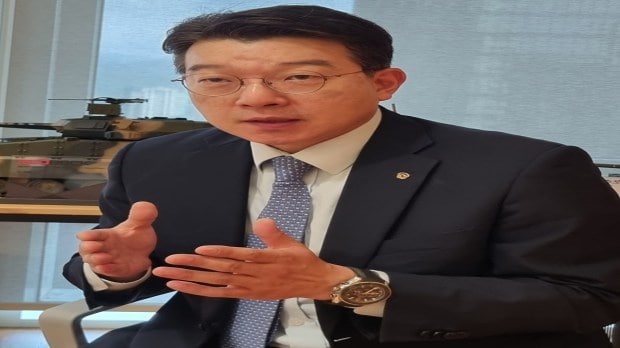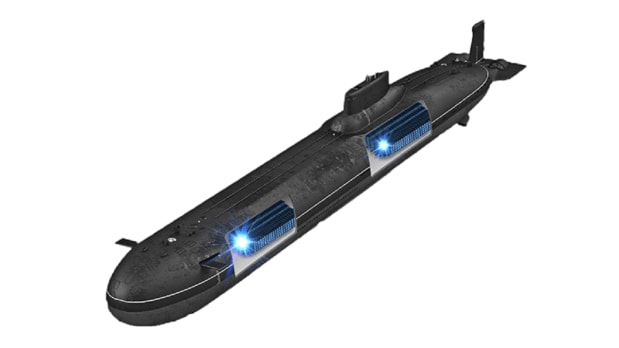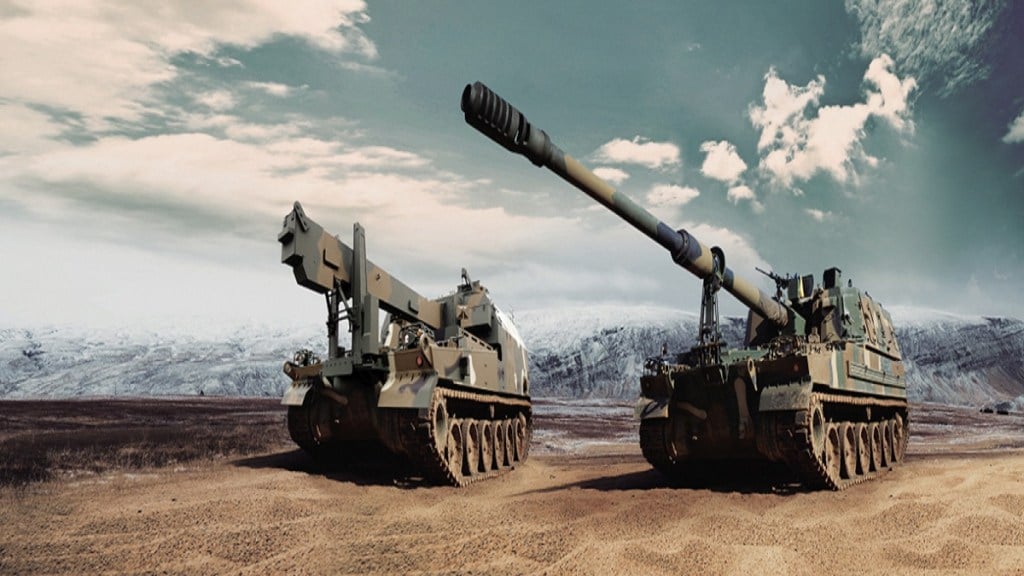Hanwha Aerospace, a defence and aerospace conglomerate from South Korea has set foot in India with its flagship self-propelled howitzer (SPH)—K-9 Vajra with Indian partner L&T. The partnership became a success story for its timely delivery and tech transfer. Building upon such collaboration, Hanwha is keen to offer its advanced systems and military platforms to India.

Hanwha Group’s defence division has also gone through a major restructuring, consolidating the defence functions that were spread across various subsidiaries. Hanwha Group has recently acquired DSME (Daewoo Shipbuilding & Marine Engineering), now being called Hanwha Ocean. Leveraging the its breakthrough in developing lithium-ion battery systems for submarines, Hanwha has developed a next-generation energy storage system (ESS) optimized for general ships.
Hanwha’s Aerospace Division has produced more than 9,000 engines which power a range of fighter jets, such as the F-15K and T-50 advanced jet trainer, localized engines for South Korea’s domestic multipurpose helicopter Surion, and provided engines for naval flagship vessels. Additionally, Hanwha also gained expertise in turbine engine solutions and with GE, the Division is taking the lead in developing an integrated engine for the KF-21, a next-generation South Korean fighter jet, while localizing its key components.
Such strategic expertise opens a wide range of military-industrial partnerships with India within the ambit of Indo-South Korea bilateral relations. How is it unfolding which will be definitive in forging greater alignment between the two Asian democracies?
Excerpts:
South Korea is well entrenched in the strategic framework of India, building upon the comprehensive partnership. While the Korean entities are fairly spared across India, defence-industrial cooperation is evolving based on the success of K-9 Vajra. How do you look at India in your overall strategy?
Kim: We are excited about our ongoing collaboration with India, which has expressed interest in our defence system, including K9 Vajra. We anticipate further developments in our partnership and continue to explore additional opportunities for cooperation in the defence sector.
We also remain committed to working with Larsen and Toubro (L&T), our valued partner. We eagerly anticipate upcoming business programs with L&T. India remains a valued partner in our endeavours, despite encountering some delays in the procurement process.
In terms of international politics, India is an important member of the Quad, which includes the United States. Although Korea is not an official member of the Quad, we are a strong ally of the United States and actively participate as an observer or partner in military alliances like the Quad and AUKUS. Given this background, India is a valuable partner for us.
Moreover, our successful collaborations extend to various countries, such as Australia, Egypt, and Poland, where we transfer technology and establish manufacturing facilities to localize production.
The K9 Vajra is about to receive 100 more orders. So, will there be more upgrades in the next K9 Vajra? Or, will be similar to what has been produced so far?
Kim: Following the K9A1, subsequent version such as the K9A2 system is expected to be deployed around the 2030s.
Notably, we are actively pursuing a path of increased automation, whereby a significant portion of our systems will undergo automation, resulting in reduced crew requirements.
Our business model lies in our commitment to customer satisfaction and long-term support. Upon the initial sale of our equipment, we endeavour to offer upgrade options after a period of 5~10 years.

This approach allows us to continually enhance and improve our systems, offering a significant advantage to our customers. It ensures that our equipment remains up-to-date and aligned with evolving requirements. Such a comprehensive upgrade provision distinguishes our offering and enhances the value proposition for our customers.
India and Korea are building in defence military industrial capacity. Based on the success of K-9 Vajra, what are the possibilities beyond land systems? What are the systems and platforms which Hanwha would like to offer to the Indian arms forces?
Kim: Indeed, significant developments have taken place at Hanwha Group’s defence division. Last year, we successfully consolidated the defence functions that were spread across various subsidiaries. Additionally, we recently acquired DSME(Daewoo Shipbuilding & Marine Engineering), now called Hanwha Ocean.
In January, during the visit of L&T’s president to Hanwha, there was a notable expression of interest in the submarine program. Hence, submarines represent another potential area for collaboration. Moreover, the field of space technology holds promise.
Although I may not possess in-depth knowledge in this domain, I would like to highlight that Hanwha recently achieved a successful launch of the Korean vertical launcher system just last month.
Notably, we have taken full responsibility for this program from the government’s R&D body. Therefore, both space and submarines present unique opportunities for collaboration and advancement.
As I understand Korea has a very dominant position in shipbuilding. It has one of the finest shipbuilding ecosystems in the world. India is also pursuing its shipbuilding program, including commercial and oil exploration vessels. Do you think there is a possibility for Hanwha leadership to join hands with the industry?
Kim: It is worth noting that Hanwha successfully acquired DSME (Daewoo Shipbuilding & Marine Engineering). This strategic move allows Hanwha to benefit from Daewoo’s specialization and expertise in the shipbuilding industry.
Under its new name, Hanwha Ocean (formerly known as Daewoo Shipbuilding & Marine Engineering or DSME), the company is well-positioned to capitalize on Daewoo’s strengths and further strengthen its standing within the industry.
The former DSME underwent a name change and is now known as Hanwha Ocean, a development that occurred just last month. Hanwha Aerospace holds a significant stake as the major shareholder of Hanwha Ocean.
S
DSME which is now Hanwha Ocean had shown interest in Project-75 (India) in building the next-generation Submarine, which is based on the air-independent propulsion system. Could you tell us more?
Kim: Yes, as I mentioned before, there was a notable expression of interest from our partner for cooperation in this program. We are actively exploring opportunities to participate in the submarines project. One such example is providing our cutting-edge Energy Storage System technology for the submarine’s battery pack. The Indian government has presented us with a clear vision for the future plan, and we are confident in actively proceeding with this project.

How keen are you to participate in P-75 I and what is that you are offering under the strategic partnership(SP) model?
Park: Every project is unique and very important for us. We are seeking for a chance to participate with our submarine technology and advanced systems, meanwhile our battery team and Hanwha Ocean are reviewing the recent RFP.
What is your overall strategic plan for investment, including R&D in India?
Kim: We have extensive experience in collaborating with local suppliers. For the India project, we will strive to meet the required criteria. If the investment is necessary, we are prepared to contribute. We are very experienced in incorporating local suppliers.
For example, we are in negotiations with the Polish government regarding localized production. We are actively discussing potential partnerships with local companies, such as establishing joint ventures and investing in facilities.
You’d like to set up a factory assembly line of your own in India?
Kim: Hanwha’s overseas business model focuses on close collaboration with local companies. We actively invest and create local employment opportunities, contributing significantly to the local industry and economy.
This approach is at the core of our business model.
Hanwha has a diversified business which includes the energy sector, especially solar energy. India has also embarked on such a green energy transition. Have you thought about that? Are you keen to diversify in the energy market?
Kim: Absolutely. Let me clarify first that my focus is primarily on overseeing our overseas business operations in Hanwha Aerospace.
With that said, our energy companies operate independently and handle their own solutions. They’re quite proactive and enthusiastic when it comes to exploring business opportunities in foreign countries like the United States and Europe.
Considering India’s substantial population and vast market potential, it becomes a matter of common sense to explore business opportunities there. Given India’s demographics and market size, it presents an attractive proposition for Hanwha’s expansion.
India and South Korea are strategic allies. In fact, like Korea, India is also a key ally of the United States. That makes us close partners. But there are still challenges that you talked about. Would you like to talk about some of the challenges while you are very keen to diversify and invest in the Indian market?
Kim: When it comes to defence products, we must consider various factors such as political relationships and the changing dynamics of international politics.
As of now, India remains one of our key strategic partners. The strong foundation between Korea and India suggests that the defence sector holds significant potential for collaboration and growth.
Park: For development programs, there is a trend to offer rewards to participating companies, such as those in Australian and USA programs.
The government or MOD (Ministry of Defence) typically compensate some part of the cost as a reward at each stage of the program. Ideally, the government or MOD could extend such rewards to participants, as it would encourage and justify their involvement more effectively.
With this approach, we and the Indian partner company can seek the opportunity within every program and contribute positively to its success.

